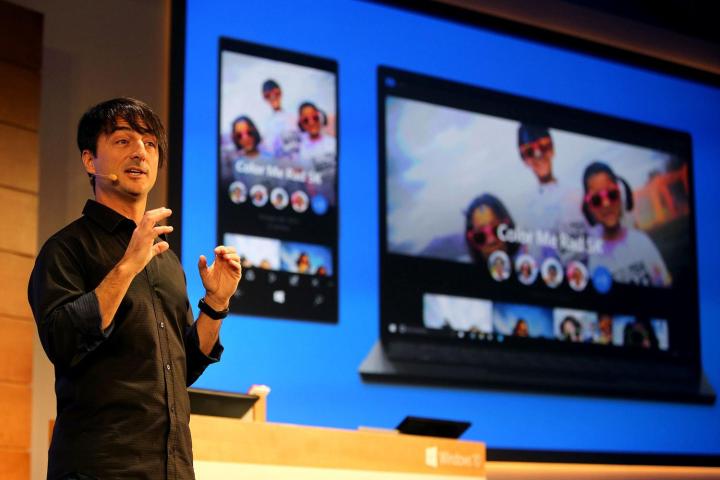
Obviously short for “application,” the abbreviation apps originated, or at least became prevalent, with the original iPhone (and a little later the iPad) and Apple’s App Store. From there, the term “app” spread from the mobile world to include programs, or applications, that run on all platforms. Somewhere along the line Microsoft Office suite programs, such as Word or Excel, became “apps,” and the distinction between those big, expansive Windows desktop programs and small smartphone apps was lost, or at least blurred.
Microsoft to the rescue! Just as we were getting used to “Universal apps,” Redmond up and announces yet another name change. If you’re paying attention to all this, it probably all seems confusing, maybe even silly. Even so, let’s see if we can make sense of it.
What’s in a Name?
Everyone liked the first name Microsoft picked, “Metro apps,” which associated the style with Windows 8’s whole flat-button-and-tile “Metro style” interface. Not only did Metro apps seem apt, it was also somewhat chic, not to mention pleasant to say. Alas, it was also taken by a highly resourceful German company not about to give it up or let Microsoft use its company name as a brand.
Metro was popular enough that a few variations, such as Metro-style apps, for instance, cropped up, but apparently Microsoft decided that it wasn’t worth going to court over (or maybe it was a fight the company knew it couldn’t win). After that, none of the ensuing rebadges, including, Windows 8-style apps, Modern apps, Windows Store apps, and more, caught on. The most recent attempt was “Universal apps,” which Redmond settled on (and announced) just a few months ago.

According to Microsoft, apps are “universal” in the sense that they’re built on a single runtime, but they run on multiple devices, such as smartphones, tablets, laptops, desktop PCs, game consoles, via what the company now calls the Windows 10 universal app platform (UAP). It seems the company felt “universal” was too generic a term, however, so once again a change has taken place. The latest term endorsed by Microsoft is “Windows apps.” In addition, programs that run only on Windows PCs will be called “Windows desktop applications.”
One Windows, Really?
Since its ramp up to Windows 8, Microsoft has been touting the benefits of its One Windows utopia where all Windows devices run the same base operating system and the same apps, but if Windows 8 taught us anything, it’s that not all programs, or program types, make good candidates for use on less powerful, smaller-screen mobile devices.
If Windows 8 taught us anything, it’s that not all programs make good candidates for cross-device use.
To run on all devices a Windows app will need to compensate for the capabilities (or lack thereof) of the lowest common denominator — say, perhaps, a relatively slow 7-inch tablet. In fact, that’s one of the primary differences between Windows apps and Windows desktop applications. Windows apps will be (much like they are now), compared to many of their Windows-desktop-application counterparts, small and self-contained. Windows desktop applications, on the other hand, deploy the more traditional, often massive .exe executable with .dlls and other supporting files.
As a result, many Windows desktop applications (think Microsoft PowerPoint or maybe even bigger, like several of Adobe’s Creative Cloud professional media editing programs) are just too big and powerful to run on low-power, small-screen tablets. However, the distinction doesn’t stop there. Windows 10 further divides apps (again by device type) into Windows Store apps and Windows Phone Store apps. A Windows Phone Store app is a Windows Runtime app that runs on Windows Phones and is sold at the Windows Phone Store.
Confused yet? The good news is that the Windows 10 software development kit (SDK) will contain a universal Windows app template that lets developers create a Windows Store app (for tablets, laptops, and PCs) and a Windows Phone Store app in the same process. During the compiling stage, the developer can produce app packages for both the Windows Store and Windows Phone Store by checking a few boxes just prior to publishing the app.
The Push for One Windows
If Windows 8 taught us anything, it’s that unless app developers are on-board, any push for a new type of app, or more precisely adapting existing apps to a new platform, will fail. This time, though, with the Windows 10 SDK and several other incentives, Microsoft seems determined, which was further demonstrated at the recent WinHEC 2015 conference, where the company introduced its Windows 10 device platform. The new platform allows hardware vendors to develop a single universal driver for deploying their wares across all Windows 10 device types.
Moving to One Windows is obviously no easy task–perhaps it’s not unreasonable to have to get there in multiple versions. But really, most people don’t care what gets called what. Most people just want it all to work, without having to think about how and why. That said, one Windows running the same apps across several different device types is a laudable goal with some obvious benefits. If it works.
One thing is for certain. Windows 8 introduced a clunky, Windows Phone-like tile overlay that, in retrospect, feels a bit like a trick. No matter what we wind up calling the programs that run across multiple platforms in Windows 10, they’ll need to work right the first time, because no one will give Microsoft a second chance.
Editors' Recommendations
- I never knew I needed this mini Mac app, but now I can’t live without it
- Why I can’t wait for Apple to finally make a smart ring
- ‘Compact Mode’ can’t fix the Xbox app. Here’s what could
- ChatGPT can now generate working Windows 11 keys for free
- It’s official — Motorola’s next Razr is the 2023 phone I can’t wait for


